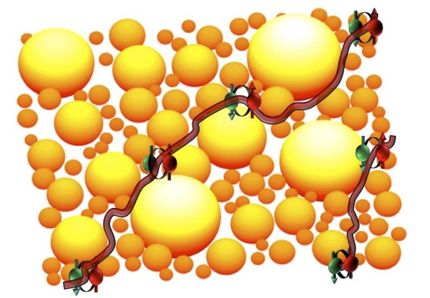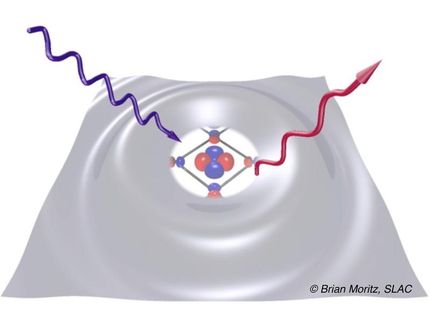Cuprates earn their stripes
Superconductivity breakthroughs
The Canadian research community on high-temperature superconductivity continues to lead this exciting scientific field with groundbreaking results coming hot on the heels of big theoretical questions.
The latest breakthrough, which will be published Science, answers a key question on the microscopic electronic structure of cuprate superconductors, the most celebrated material family in our quest for true room-temperature superconductivity.
This result is the product of a longstanding close collaboration between the University of British Columbia Quantum Matter Institute and the Canadian Light Source. In fact, this is the third Science paper to come out of this remarkably fruitful collaboration this past year, and the first to feature an all-Canadian effort.
The collaborators work at the forefront of research into high-temperature superconductors, an exciting class of materials exhibiting superconductivity at temperatures as comparatively warm as -100?C. As frigid as such temperature may sound, it outperforms by far traditional superconductors, which operate at closer to -270?C, or a few degrees from absolute zero - the point where all motion stops."
In the superconducting state, electricity flows with absolutely no resistance, which means no energy is lost and no heat is generated. Combined, these properties allow for large 'supercurrents' that could not be realized in ordinary wires.
For this reason, superconductors are already used to provide the large magnetic fields needed for Magnetic Resonance Imaging, but the cooling systems needed to make them work are costly and impede other potential uses. Some of the major, transformative applications of room-temperature superconductivity include magnetic levitation trains and lossless power lines.
The paper's lead author, Riccardo Comin, a UBC graduate from Andrea Damascelli's group and now a post-doctoral fellow at the University of Toronto, compares the movement of electrons in a superconductor to birds flying in formation, coherently and without collisions. In physics-speak, the electrons move coherently and in phase, and no energy is lost as they drift smoothly along.
In cuprate superconductors, another state blocks and interacts with superconductivity: the charge-density-wave, in which the electrons assume a static pattern, different from the pattern that the material's crystal structure defines.
You can also think of the superconducting electrons like cars on a highway, all moving the same speed and direction, the picture of efficiency. But the charge-density-wave state acts like a patterned traffic jam: no movement, anywhere.
Understanding what causes this pattern is thought to be a key step to understanding superconductivity, but even pinning down the nature of the pattern has been elusive. Major theoretical models predict either a parallel line structure, or a checkerboard pattern. Unfortunately, even with advanced synchrotron techniques, it has proved impossible to see the difference between the two models.
That is, until Comin's latest results in Science, which show that the cuprate superconductor in question has a stripe-like pattern rather than a checkerboard one. The UBC-CLS team used an unconventional experimental approach to reconstruct a 2-dimensional model of the static electron pattern from 1-dimensional scans--much like the tomographic reconstructions used for medical purposes.
These results offer new fundamental insights helping hone the search for room temperature superconductivity. However, more challenging questions remain. Among these puzzles: What is the driving force behind the tendency of electrons to move together coherently in the superconducting state, and how can the superconductivity transition temperature be further enhanced? Despite almost 30 years of history, the field of high temperature superconductivity is more alive than ever.
Most read news
Organizations

Get the analytics and lab tech industry in your inbox
By submitting this form you agree that LUMITOS AG will send you the newsletter(s) selected above by email. Your data will not be passed on to third parties. Your data will be stored and processed in accordance with our data protection regulations. LUMITOS may contact you by email for the purpose of advertising or market and opinion surveys. You can revoke your consent at any time without giving reasons to LUMITOS AG, Ernst-Augustin-Str. 2, 12489 Berlin, Germany or by e-mail at revoke@lumitos.com with effect for the future. In addition, each email contains a link to unsubscribe from the corresponding newsletter.
























































